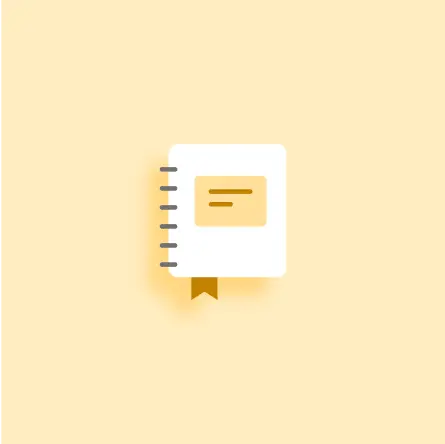Assessments and ChatGPT
Master the art of crafting assessment tasks that uphold academic integrity and enhance student learning with this in-depth resource. Discover how to create engaging and equitable assessments, employ innovative reporting techniques, and maintain the highest standards of academic integrity. Get started with our collection of ChatGPT prompts tailored for assessment design and insightful reporting!
As educators, it’s natural for us to have questions and some concerns when it comes to the impact of AI on our assessment practices. You might be wondering, “How will I know if students’ work is authentic?” or “When might it be appropriate for students to use AI tools?” These concerns are valid, and you’re not alone in pondering them. Many of us are navigating this new terrain together, looking for ways to harness the potential of AI while also limiting the risks. So, let’s take these questions as starting points, and explore how AI can be a tool for positive change, rather than a challenge to overcome.
We’re here to help you navigate this new territory!
In this guide, we will explore:
- A mindset shift – how we can rethink the purpose of assessment to design intentional and responsive assessments
- Eight strategies to AI-proof assessments – how eight simple strategies can help you make your assessment tasks more robust and AI-resistant
- A new approach to academic integrity – how we can help students use AI appropriately and ethically
- Report writing using AI – how to craft report comment templates using ChatGPT
Rethinking why we assess
The conversation around AI in assessment is a great opportunity to think about why we assess. For many students, assessment is about chasing grades and qualifications, making tools like ChatGPT a quick and easy path to essays and projects that earn passing scores.
For students and teachers who embrace assessments as a tool for ongoing learning and skill development, ChatGPT is much less tempting. Why would a student submit AI-generated work for feedback if their goal is to show what they can do and get advice about how to improve? By shifting the mindset from achievement and qualification to growth and development, we can create a learning environment that values progress over perfection, and encourages students to invest the time and effort required to learn. When viewed from this lens, AI-tools can work as thinking and learning tools and not shortcut tools.
8 AI-proof assessment strategies
While we do our best to keep students’ focus on continuous learning and development, we can’t ignore the elephant in the room: Some students will still be tempted to use AI shortcuts. The problem is real, but it’s not insurmountable. We’ve put together 8 strategies that can help keep your assessments authentic and maintain academic integrity. These are practical tools that you can use to adapt your existing assessment tasks or develop new ones.

Get specific
Often we default to writing essays or creating presentations, but is that the only way to assess? Most of the time, it’s really about what those essays and presentations represent – a deeper understanding, critical thinking, or mastery of concepts. By clearly defining our objectives, we can devise imaginative ways for students to demonstrate their learning beyond just text.
Make it multimodal
AI struggles with tasks that combine text, images, voice, and video. Encourage students to express themselves through varied formats like annotated diagrams, flowcharts, and infographics. This not only curbs the AI dependency but also enriches their communication skills.
Make it personal
Personalised tasks that resonate with students’ interests ignite their motivation and reduce the allure of AI. AI-generated responses often lack the personal touch and depth that come from genuine, student-driven work. When students connect learning with their own experiences, the outcomes are authentically theirs.
Focus on the process
Shift the spotlight from the end product to the learning journey. Assessing the process provides insights into students’ thought patterns and problem-solving tactics. This approach ensures that the work reflects their own abilities, making AI shortcuts less feasible and less appealing.
Reduce cognitive load
Overly complex tasks can be daunting for students. Sometimes, allowing AI to assist with initial drafts can help students focus on the essence of the task. This not only streamlines the process but also unveils their true capabilities as they delve deeper into the subject matter.
Focus on curation
Encourage students to curate artefacts that demonstrate their understanding. This method is inherently personal and difficult to replicate with AI. It promotes critical thinking, creativity, and a hands-on approach to learning, making it a powerful tool for genuine assessment.
Make it live
Real-time demonstrations of skills provide a clear window into students’ true abilities. Interactive assessments where students respond on the spot to prompts or questions ensure that they can’t fall back on pre-prepared, AI-generated responses.
Work with it
AI can be a valuable ally in the classroom when used thoughtfully. Establish clear guidelines with students on how and when they can employ AI tools. Whether for brainstorming, outlining, drafting, or editing, transparency about the use of AI in their work process is crucial.
By integrating these eight strategies into our assessment design, we’re not just preventing AI-related cheating, we’re enhancing the entire learning experience. Our focus on specificity, multimodality, personalisation, process, curation, live demonstrations, and the thoughtful incorporation of AI leads to assessments that are not just tests, but meaningful learning experiences. They become authentic indicators of our students’ abilities, encouraging real engagement and making the urge to cheat less appealing.
Ready to get started? This poster will serve as a guide for crafting authentic and unique assessments for your students!

Don’t miss out on the full suite of resources and ready-to-use AI prompts designed to fortify your assessments against AI cheating. Download our comprehensive guide now and take the first step towards creating AI-proof assessments that inspire and engage your students.

ChatGPT & academic integrity
“AI” also stands for Academic Integrity!
If we are going to help students use AI tools in their work, we also need to help them understand how to do so appropriately and honestly. Just as we teach our students to cite sources and use quotations to give credit to the original authors, we must now extend these principles to the use of AI tools. It’s all part of promoting academic integrity.

Academic integrity goes beyond just giving credit for work. It’s the responsibility of every member of the academic community to document what ideas have informed their thinking. In our guide, we compare this to leaving a trail of breadcrumbs. Our citations and bibliography show others how we came to think about what we do. It leaves a trail for them to follow back and form their own conclusions. In an AI future, this is more important than ever. This clear and honest acknowledgment of how AI has been used not only preserves the integrity of the educational process but also prepares students for a future where AI collaboration is the norm.
Report writing with AI
Writing reports provides a valuable opportunity to reflect on our students’ progress, achievements, and areas of need. As educators, we spend an incredible amount of our time crafting these comments, but what if we could streamline the process while leveraging AI to amplify its efficiency?
We’ve crafted a concise one-page report writing template. It outlines a time-saving approach to report writing and highlights how you might use ChatGPT to generate personalised comments for each learner.
Ready to navigate the new landscape of AI in education with confidence? Download our comprehensive resource now for in-depth strategies and a handy citation template to guide your students in transparently acknowledging the use of AI in their work.

Navigating assessment in an AI-powered world is not just about safeguarding assessments against AI; it’s really about designing assessment tasks that enhance students’ learning and help them incorporate AI tools when they are appropriate. From fostering a growth mindset to developing effective and engaging assessment tasks, we can help students to value the role of assessment in their own learning. As students see how assessment can help them demonstrate and develop their skills, they will be less tempted to use AI as a shortcut. Instead, students will learn to use AI skilfully and attribute it appropriately.















